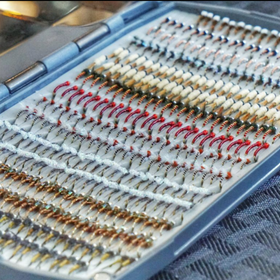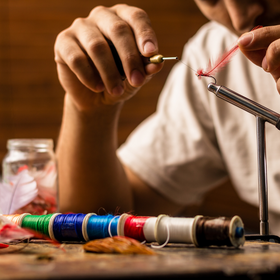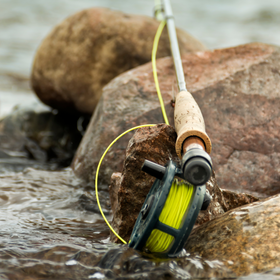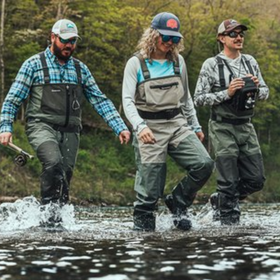The Blue certainly is a beautiful as they come, and gives visiting anglers a real sense of Colorado. It’s a tough river at times, but a good challenge will always make you a better fly-fisherman. The water is extremely cold coming off the bottom of Lake Dillon. This cold water dictates and controls the feeding window of the trout. It’s not a great morning fishery, but as the water gradually warms up throughout the day, the fishing improves dramatically. The upper stretches of the Blue (from the base of the dam through Silverthorne) holds trophy trout, fattening up on Mysis Shrimp from the lake above. The water is gin clear requiring perfect presentations. Down stream the river changes back in a typical mountain trout stream with a diverse insect life. Several tributaries inter the river before it spills into Green Mountain Reservoir.
Updated 8/13/2024
The Blue below Dillon is currently running 108 cfs, and that means fishing is highly technical right now.
When sight fishing here, go with 5x or 6x and yarn indicators for extra stealth. For flies, try the typical tailwater offerings like Foam Wing Emergers, RS2s, Black Beauties, and Merc Midges in sizes 20 through 24.
Updated 6/8/2024
Officials from Summit County and Silverthorne have closed the Blue below Dillon due to high flows, which as of Saturday is 1390 cfs.
Updated 4/2/24
The Blue River is flowing its normal historic level at this current time. Anglers can find a few cooperative fish between Town Hall and the base of Dillon Dam. Dillon Reservoir is 85% full so outflows should stay consistent throughout the winter. It’s hard to go wrong with an egg-midge combo right now. Target the slower runs and pools with precise dead drifts.
Spring on the Blue River in Colorado can offer excellent fly fishing opportunities as aquatic insect activity increases and fish become more active. Here are some effective fly patterns
to consider during the spring months:
Blue-Winged Olives (BWOs): These may still be prevalent in early spring. Carry patterns like Parachute Adams, Sparkle Duns, or Pheasant Tails in sizes #18 to #22 to imitate BWOs.
Midges: While midge activity remains consistent year-round, it can still be important in spring. Use patterns like Zebra Midges, RS2s (Rim's Semblance 2), Mercury Midges, or Disco Midges in sizes ranging from #18 to #24.
Caddisflies: As temperatures rise, caddis activity increases. Patterns like Elk Hair Caddis, X-Caddis, or Stimulators in sizes #14 to #18 can be effective imitations.
Stoneflies: Stonefly nymphs start becoming more active in spring. Carry patterns like Pat's Rubber Legs, Hare's Ear Nymphs, or Prince Nymphs in sizes #10 to #14.
Streamers: As the water warms up, fish become more aggressive. Woolly Buggers, Sculpin patterns, and other streamers in various sizes and colors can attract larger fish.
Attractor Patterns: Bright and flashy attractor patterns like San Juan Worms, Egg Patterns, or Rainbow Warriors can be effective in catching the attention of fish, especially during runoff periods.
It's essential to observe the water conditions and the behavior of the fish to determine the most effective patterns and presentations. Also, be prepared to adjust your techniques throughout the day as conditions change.





